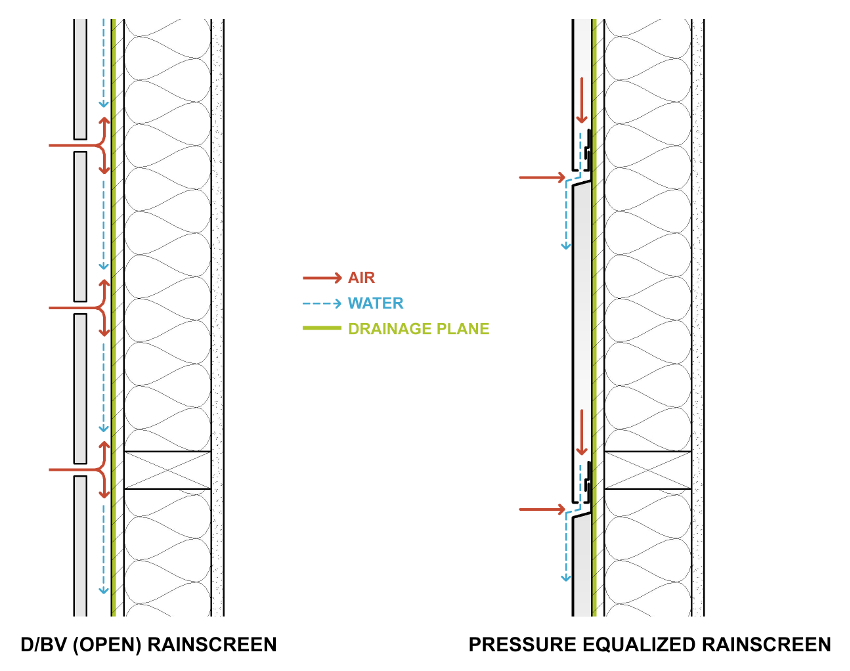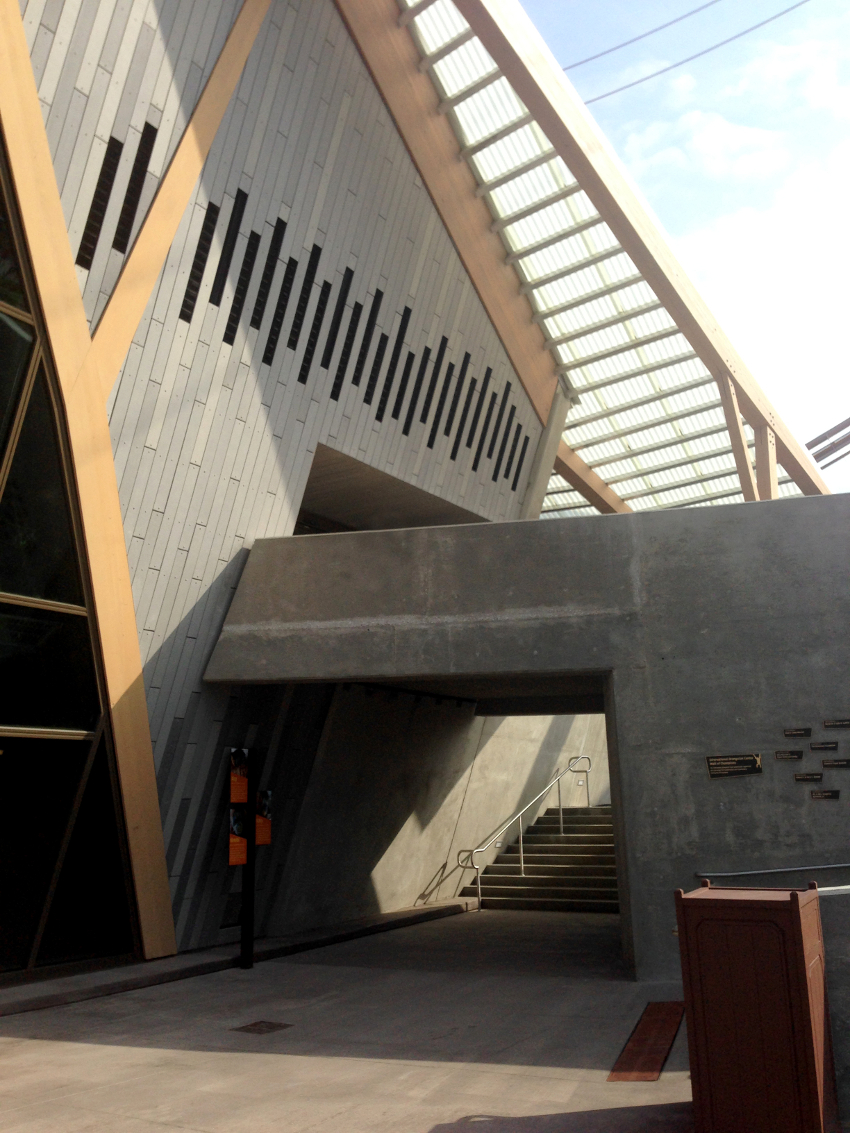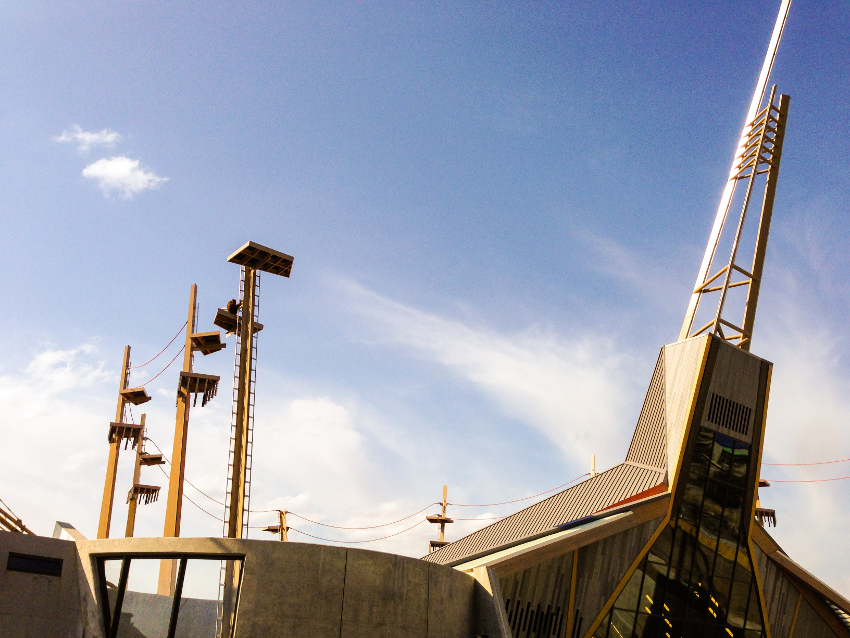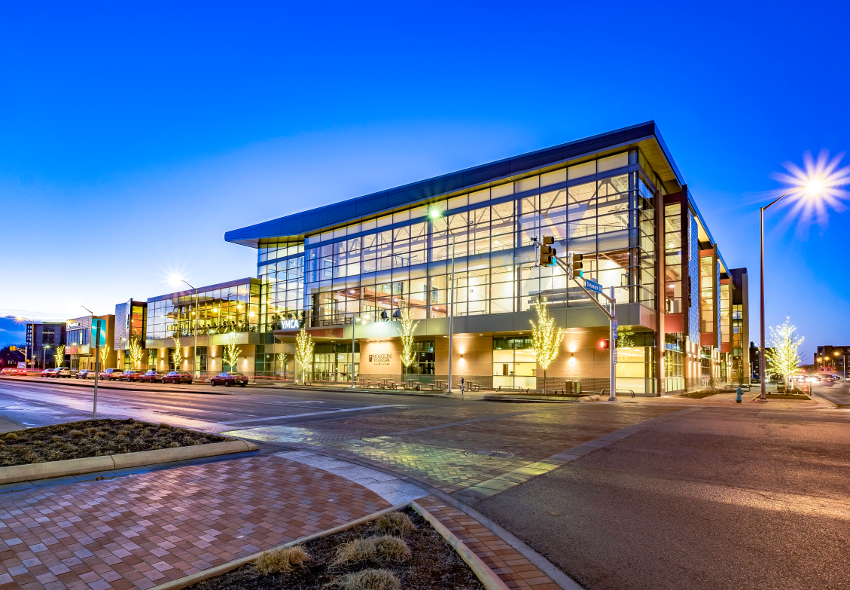Emerging Building Envelope Solutions You Can Use Today
Rainscreens
The term rainscreen has been generalized in the building design and construction industry. In essence, there are two basic types of rainscreens:
- Drained/Back Ventilated (D/BV)
- Pressure Equalized Rainscreens (PERs)

Illustration courtesy of author
Diagrams of a Drained/Back Vented (Open) Rainscreen and a Pressure Equalized Rainscreen (PER).
Drained/Back Ventilated (D/BV)
In this broad category of rainscreens, a continuous air space is provided. In some fashion, an air space between the cladding and exterior wall must be open enough to facilitate drainage and drying.
Ventilated rainscreens are open at the top and bottom of the air space to allow airflow and convective drying when water works its way behind the cladding through wind-driven rain, bulk water shedding, capillary action through the cladding, and so on. This interstitial cavity should be protected from bulk water and pests with overhangs and screens.
Vented rainscreens are open at the bottom of the air space. These systems encourage drainage but do not have sufficient airflow to enable convective drying.
Open rainscreens feature cladding with completely open vertical and horizontal joints. The drainage plane in this variety of D/BV rainscreen will be exposed to ultraviolet radiation, which could degrade the system over time.
In general, D/BV rainscreens are most appropriate for climates with less than 60 inches of annual precipitation. The marketplace for cladding material has expanded greatly in recent years. Traditional solutions such as terracotta, fiber cement panels and wood still exist, cutting-edge solutions are emerging that utilize glass fiber reinforced concrete (GFRC), ultra-high performance concrete (UHPC), phenolic panels and large-format quartz. These newer cladding solutions are durable with excellent dimensional stability, resistance to freeze/thaw degradation and notable color stability.


Photos courtesy of author and Browning Day Mullins Dierdorf
Simon Skjodt International Orangutan Center (IOC) at the Indianapolis Zoo. The primary wall assembly of the exhibit structure is protected by a D/BV (open) rainscreen comprised of GFRC panels.
Pressure Equalized Rainscreens (PERs)
This category of rainscreen is effective in all climates and provides a great option for locales that receive more than 60 inches of rain per year. PERs represent an advanced version of simple D/BV rainscreens. They integrate porous exterior cladding with compartmentalized air spaces, generous ventilation and a support wall that is tight to both air and water.
PERs get their name because they terminate wind-induced pressure differentials across the cladding system. The compartmentalized air cavity promotes rapid air pressure equalization—thus, minimizing moisture intrusion. When wind-driven air enters openings in the bottom of the cladding system, the air mass in the compartment “pushes back” as it has nowhere to escape. This prevents wind-driven rain from entering the wall system. If a small amount of rain is driven into the cavity, the same openings allow the water to drain via gravity. PERs are typically employed in several commercial cladding systems, such as metal panel systems.
All types of rainscreen systems require carefully coordinated design and detailing. As a result, they may be more expensive than other cladding options. However, especially in wet climates, they may encourage greater resistance to moisture-related forces by keeping moisture off of the wall assembly. Composite metal panel products can provide lightweight, rigid PERs solutions with complex textures and geometries. While traditionally utilizing an aluminum facing, recent composite metal panel offerings feature zinc, copper, stainless steel and titanium.
Insulated metal panel systems offer another innovative twist on PERs. With an insulation value as high as R-21 for a 3-inch-thick panel, insulated metal panel solutions feature pressure-equalized joinery to provide long-term protection with minimal maintenance, whereas a barrier-seal system depends on the accurate and consistent placement of the sealant and may also require periodic maintenance. Additionally, a vented horizontal joint is usually part of an insulated metal panel system and is designed for pressure equalization.
Even in the presence of an imperfect air barrier, the joinery maintains the system’s performance integrity. By comparison, imperfections in a barrier seal system can lead to water infiltration and subsequent damage. As some insulated metal panel systems are emerging that utilize specialized joinery in lieu of backup sheathing, the potential exists for this one product to provide a complete wall system solution by constituting the air, water and thermal barriers as well as the vapor retarder.

Photo courtesy of Douglas Adams and Browning Day Mullins Dierdorf
Among other envelope systems employed at the Irsay Family YMCA at CityWay in Indianapolis, Ind., the facility utilizes a PERs system in the form of a metal panel cladding along the fascia and soffit of the signature roof feature.









